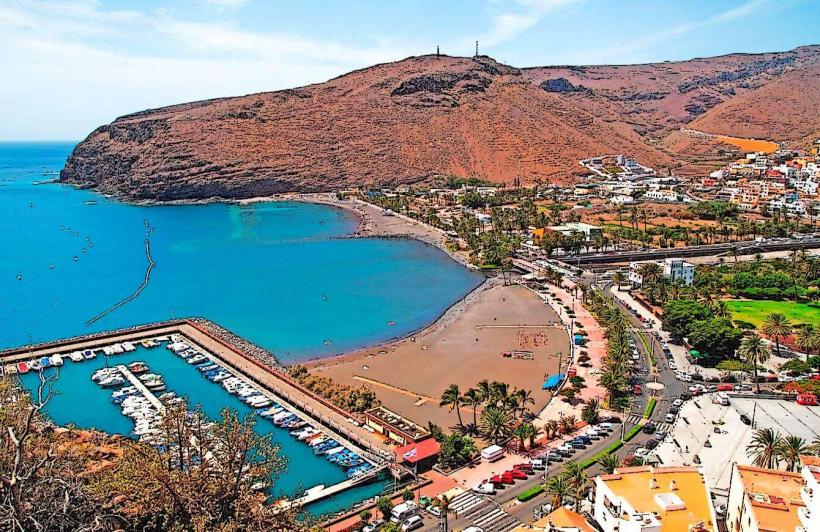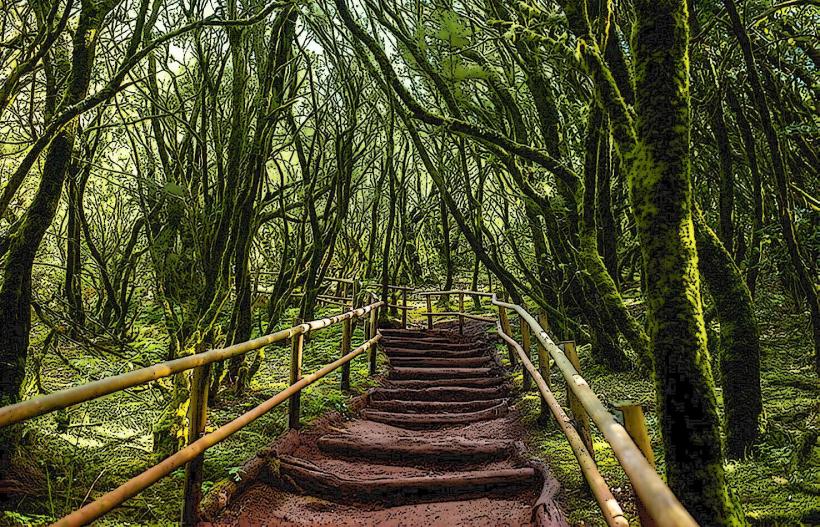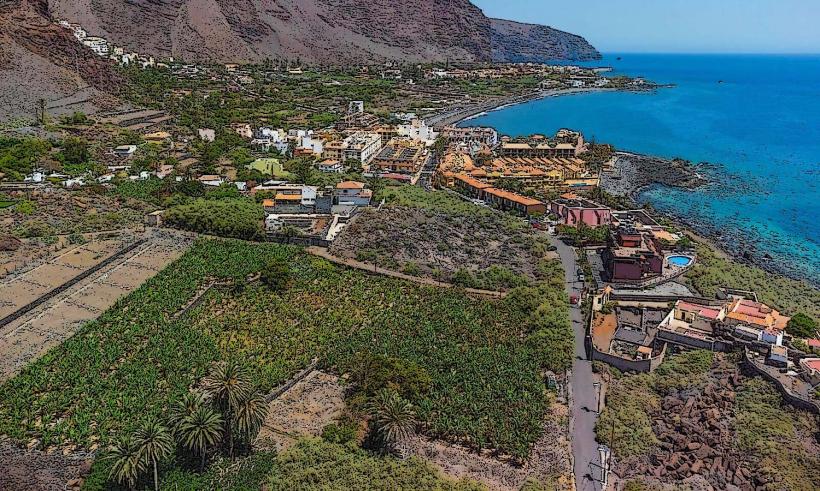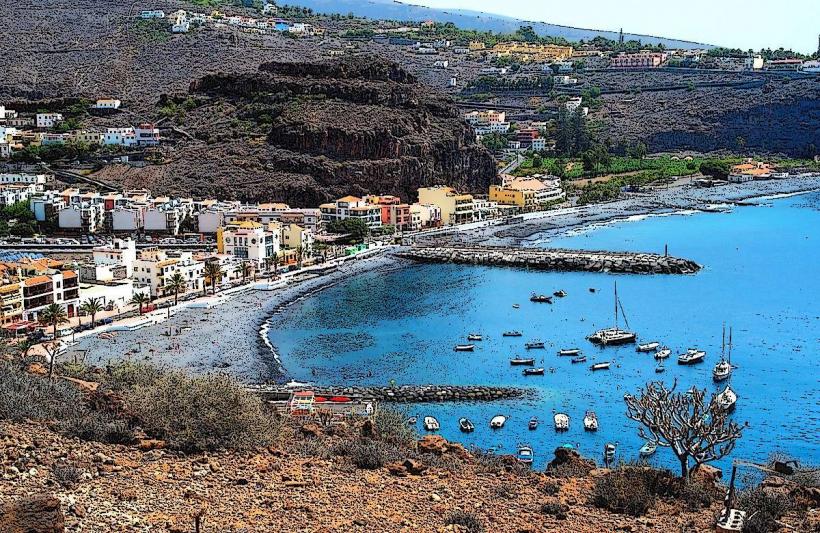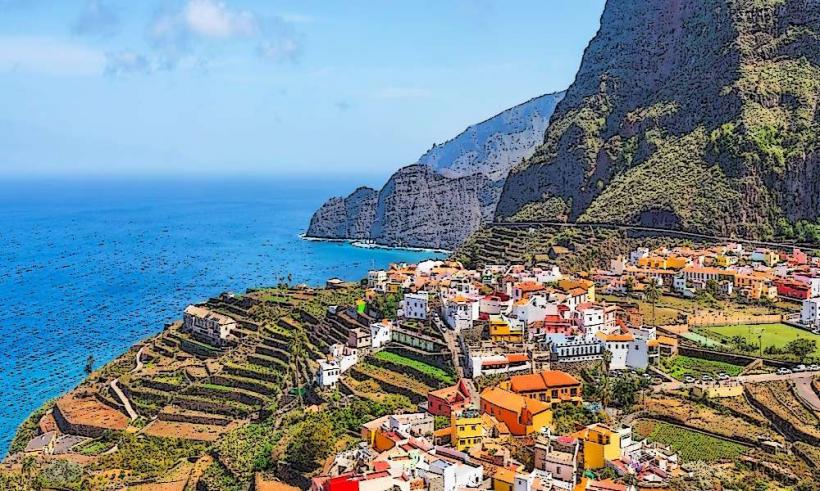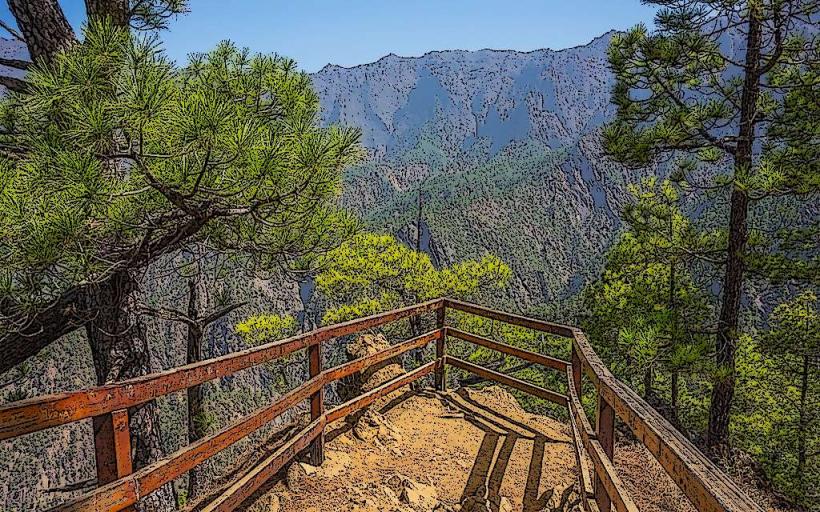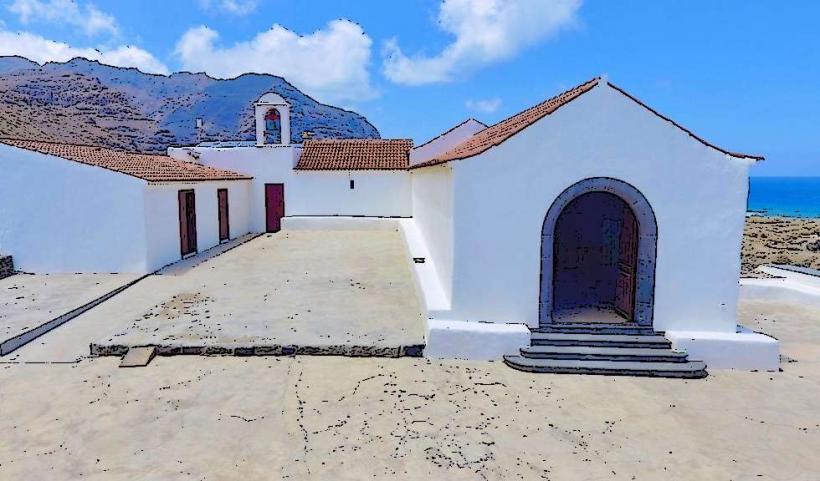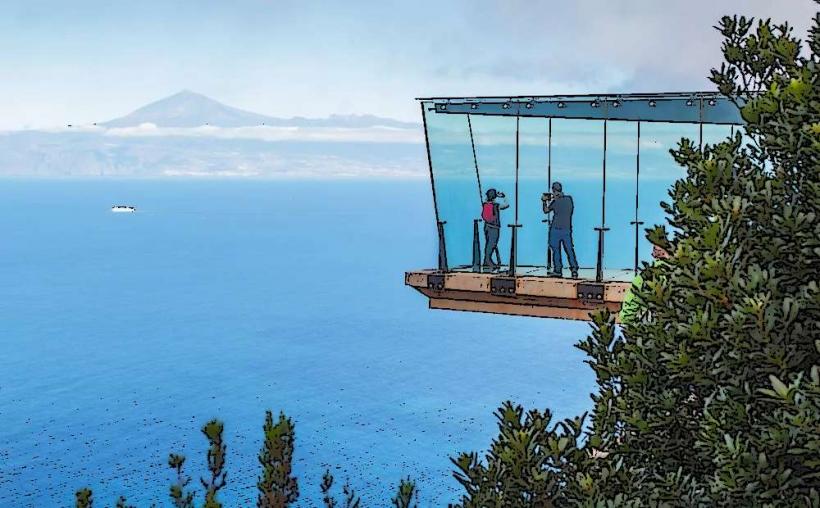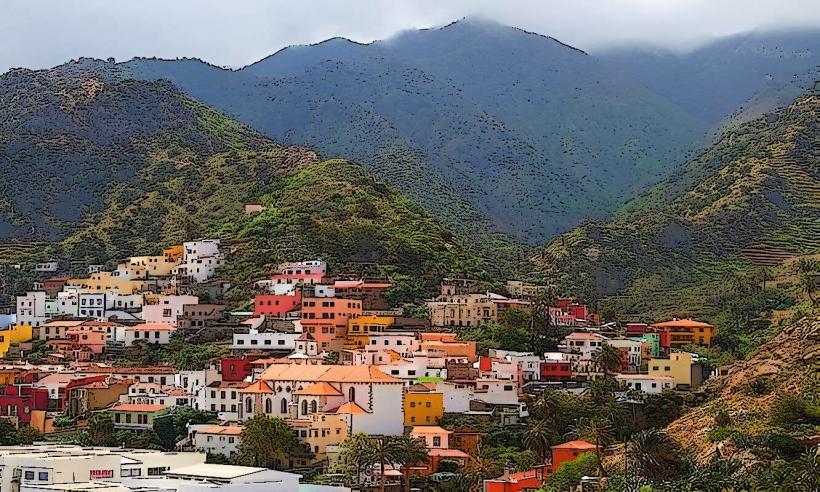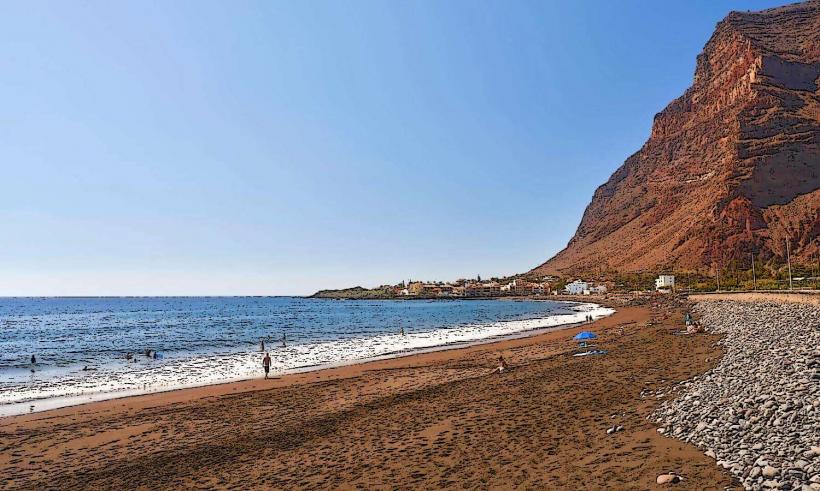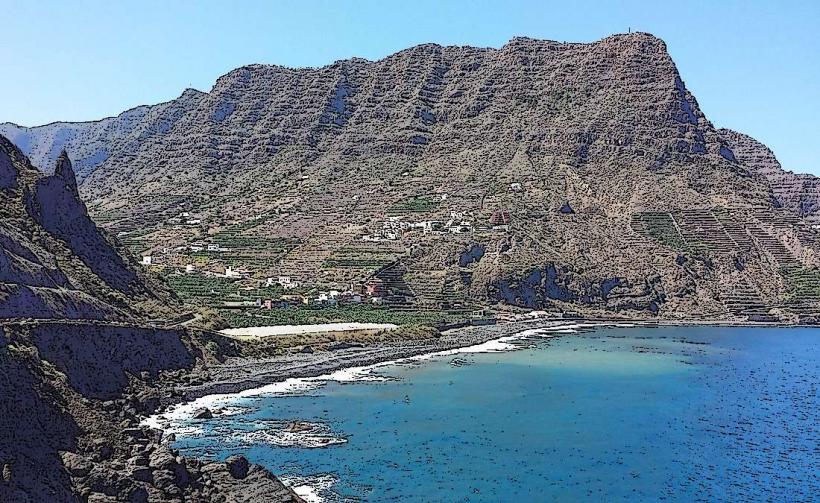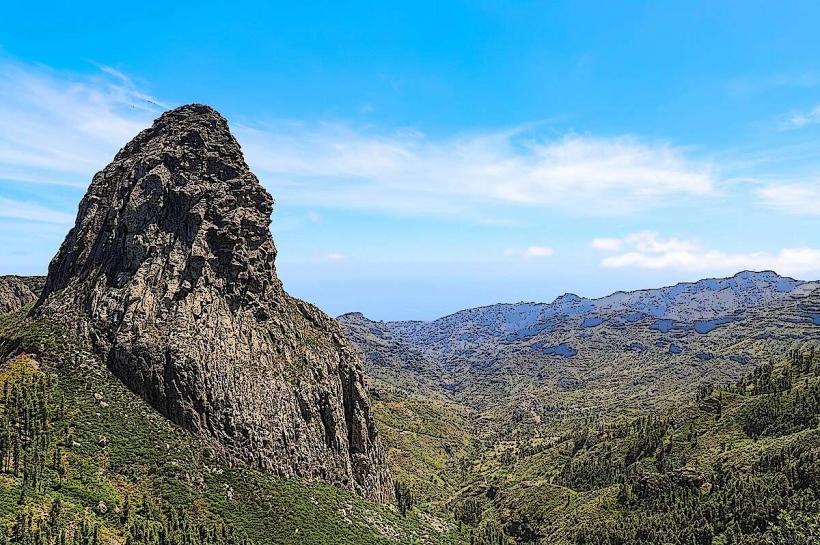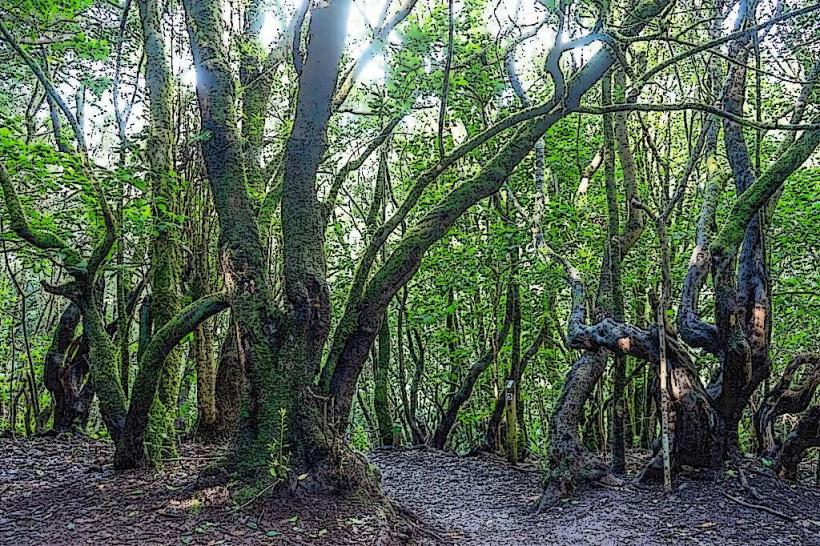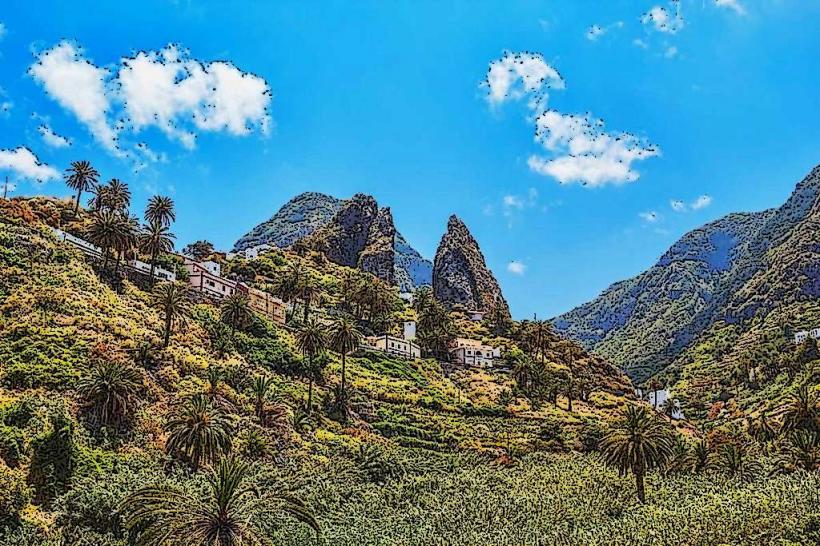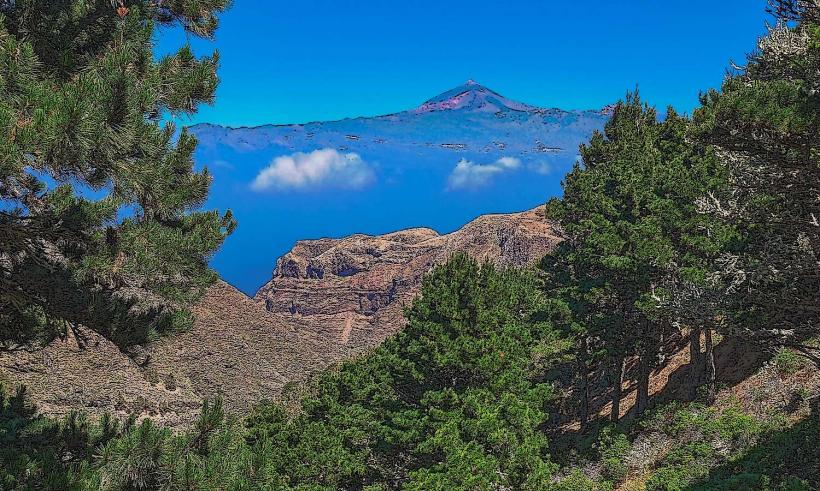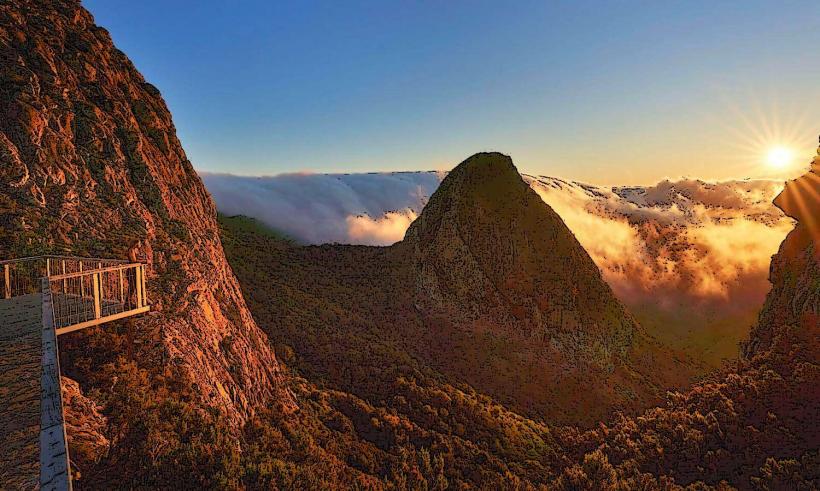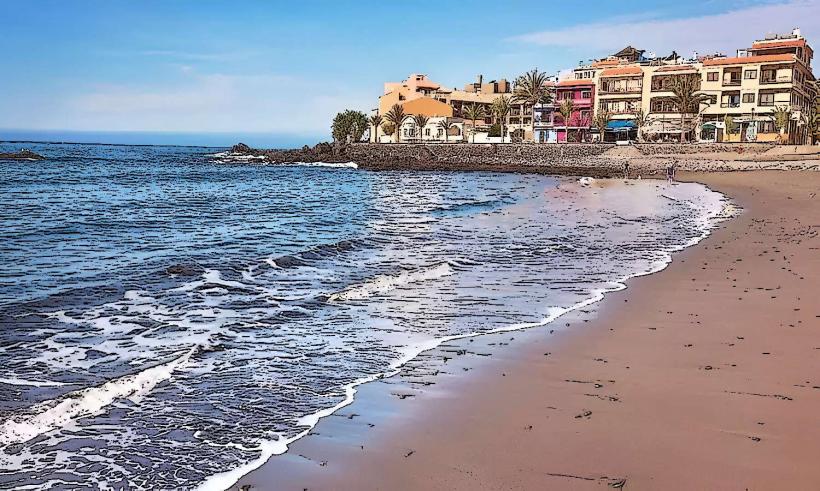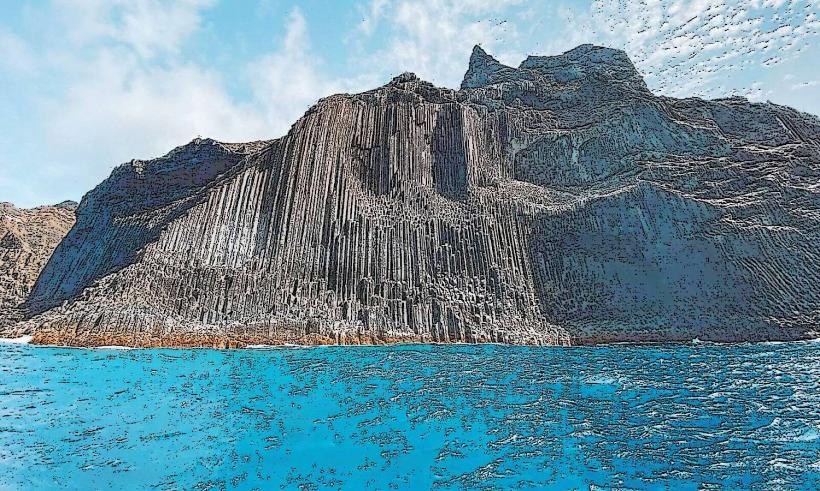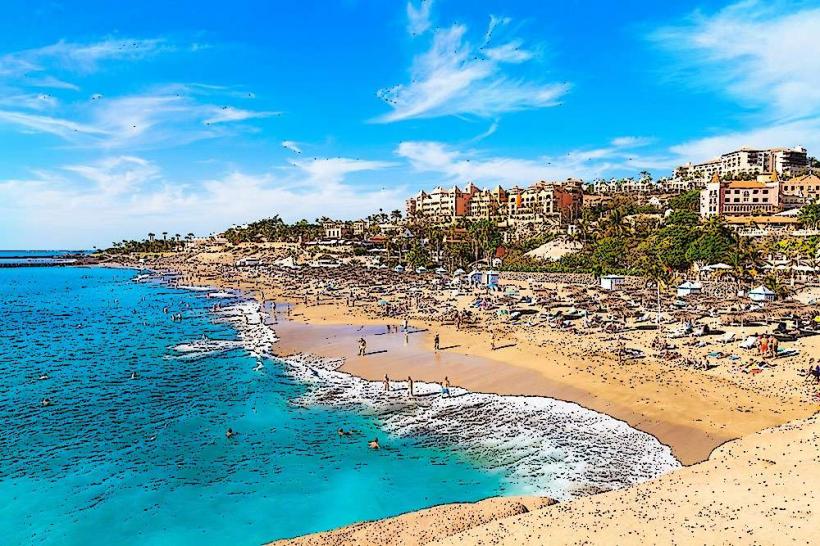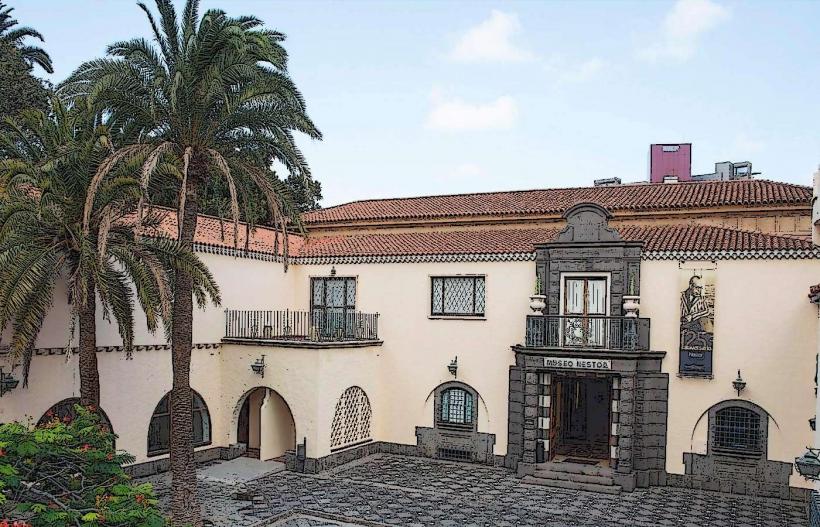Information
Landmark: Alto de GarajonayCity: La Gomera
Country: Canary Islands
Continent: Europe
Alto de Garajonay is the highest point on the island of La Gomera, located within the Garajonay National Park. It stands at 1,487 meters (4,875 feet) above sea level, making it the island’s most elevated summit. This area is not only famous for its incredible panoramic views but also for its cultural and ecological importance, as it is deeply intertwined with the island's natural beauty and history.
Key Features of Alto de Garajonay:
1. Geographical and Scenic Views
- Panoramic Views: From Alto de Garajonay, visitors are treated to breathtaking panoramic views that stretch across the island and the surrounding sea. On clear days, the Teide Volcano on the neighboring island of Tenerife is visible in the distance. The views from the summit encompass the island’s rugged terrain, dense forests, ravines, and the coastline, making it one of the most stunning viewpoints in La Gomera.
- Surrounding Landscape: The area is dominated by the lush, mist-covered laurel forests of Garajonay National Park, which is a UNESCO World Heritage site. These forests are often shrouded in mist, adding a mystical atmosphere to the landscape. The sight of these ancient forests combined with the rocky terrain creates a striking contrast that draws photographers, hikers, and nature enthusiasts to the area.
2. Garajonay National Park
- Protected Area: Alto de Garajonay is located within the Garajonay National Park, which is the largest protected natural area on the island. The park is known for its ancient laurel forests, which date back millions of years and are considered one of the best-preserved examples of subtropical cloud forests in the world. This area is a biodiversity hotspot, home to many endemic species of plants and animals.
- Flora and Fauna: The summit area and surrounding forests are rich in unique flora, including endemic species such as the Canarian pine and the gommier tree. Visitors may also encounter native bird species like the laurel pigeon and the Canary Islands stonechat. The park’s rich biodiversity makes it a popular destination for nature lovers and wildlife enthusiasts.
- Hiking Trails: Alto de Garajonay serves as a starting point or a key stopping point for several hiking trails that weave through the national park. Some trails are more challenging, while others are relatively easy, offering a variety of hiking experiences for different skill levels.
3. Accessibility and Visitor Experience
- Road Access: Alto de Garajonay is accessible by road, with a dedicated viewpoint (Mirador Alto de Garajonay) where visitors can stop and enjoy the breathtaking views. The road leading to the summit is part of the island’s network of winding mountain roads, which provide a scenic journey through the park’s lush forests and rugged terrain.
- Visitor Facilities: There is a visitor center near the Alto de Garajonay that provides information about the park’s biodiversity, history, and hiking trails. It serves as a great starting point for anyone planning to explore the area on foot. The center also has exhibits that educate visitors about the island’s unique ecosystems and conservation efforts.
- Weather Conditions: Due to the altitude, the weather at Alto de Garajonay can be cooler and mistier than at lower altitudes. The region is often covered in clouds, especially in the morning, creating a mysterious, foggy atmosphere. In contrast, during the afternoon or on clear days, the views can be spectacular. It is advisable to bring a light jacket, as temperatures can drop even in warmer months.
4. Cultural and Historical Significance
- Mythological Importance: Alto de Garajonay holds a significant place in the island's folklore and mythology. According to local legend, the area is associated with the Guanches, the indigenous people of the Canary Islands. The summit and the surrounding areas are often seen as sacred, with stories about gods and spirits connected to the forest and mountains.
- Historical Context: Historically, Garajonay and its surrounding areas were central to the island's settlement patterns. The forest and the mountains provided resources for the early inhabitants, and the steep ravines created natural fortifications. Over the centuries, these natural landscapes have shaped the culture and traditions of La Gomera.
5. Hiking and Outdoor Activities
- Popular Hiking Routes: From Alto de Garajonay, visitors can access several well-marked hiking trails that explore the park’s natural beauty. Some of the popular routes include:
- Sendero de los Roques: A moderately challenging trail that leads through the park to the Roques de Agulo, a set of striking volcanic rock formations. This trail provides fantastic views of the cliffs and valleys.
- Sendero de la Cumbrecita: A circular trail that takes hikers through the laurel forests and offers a closer look at the park’s dense vegetation and endemic wildlife.
- Circular Route of Garajonay: A longer, more challenging route that traverses the park and takes visitors through different ecosystems, offering varied landscapes and viewpoints.
- Birdwatching and Photography: The high elevation and rich biodiversity make Alto de Garajonay an excellent destination for birdwatching and nature photography. The combination of misty landscapes, endemic species, and dramatic scenery offers ample opportunities for capturing stunning photos.
Conclusion
Alto de Garajonay is not only the highest point on La Gomera but also a central hub for experiencing the island's natural beauty and cultural significance. With its panoramic views, proximity to Garajonay National Park, and access to hiking trails, it attracts nature lovers, hikers, and those interested in the island's folklore. Whether you're seeking adventure through hiking, a tranquil experience surrounded by lush forests, or simply wish to enjoy the incredible views, Alto de Garajonay offers something for everyone.

